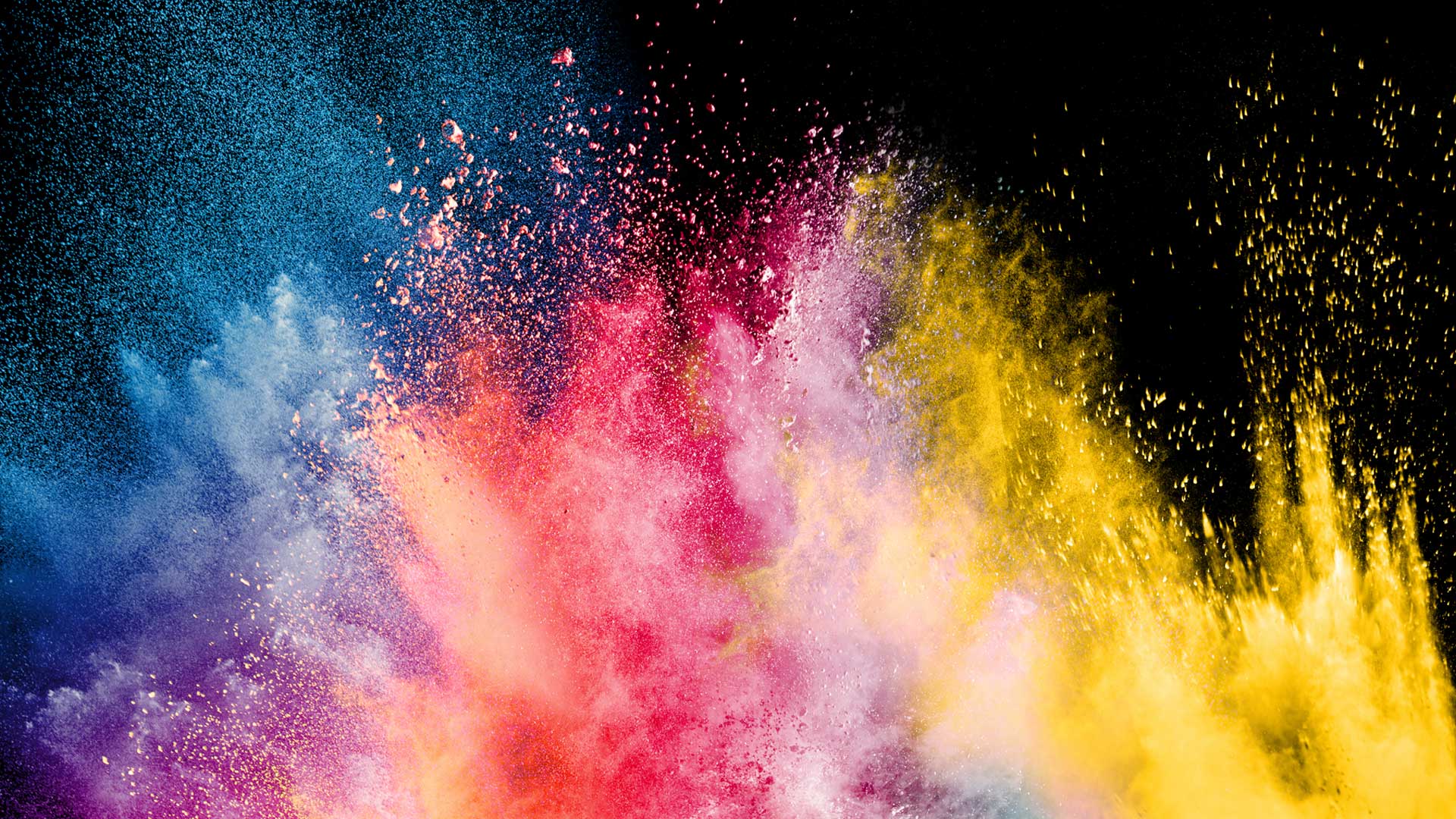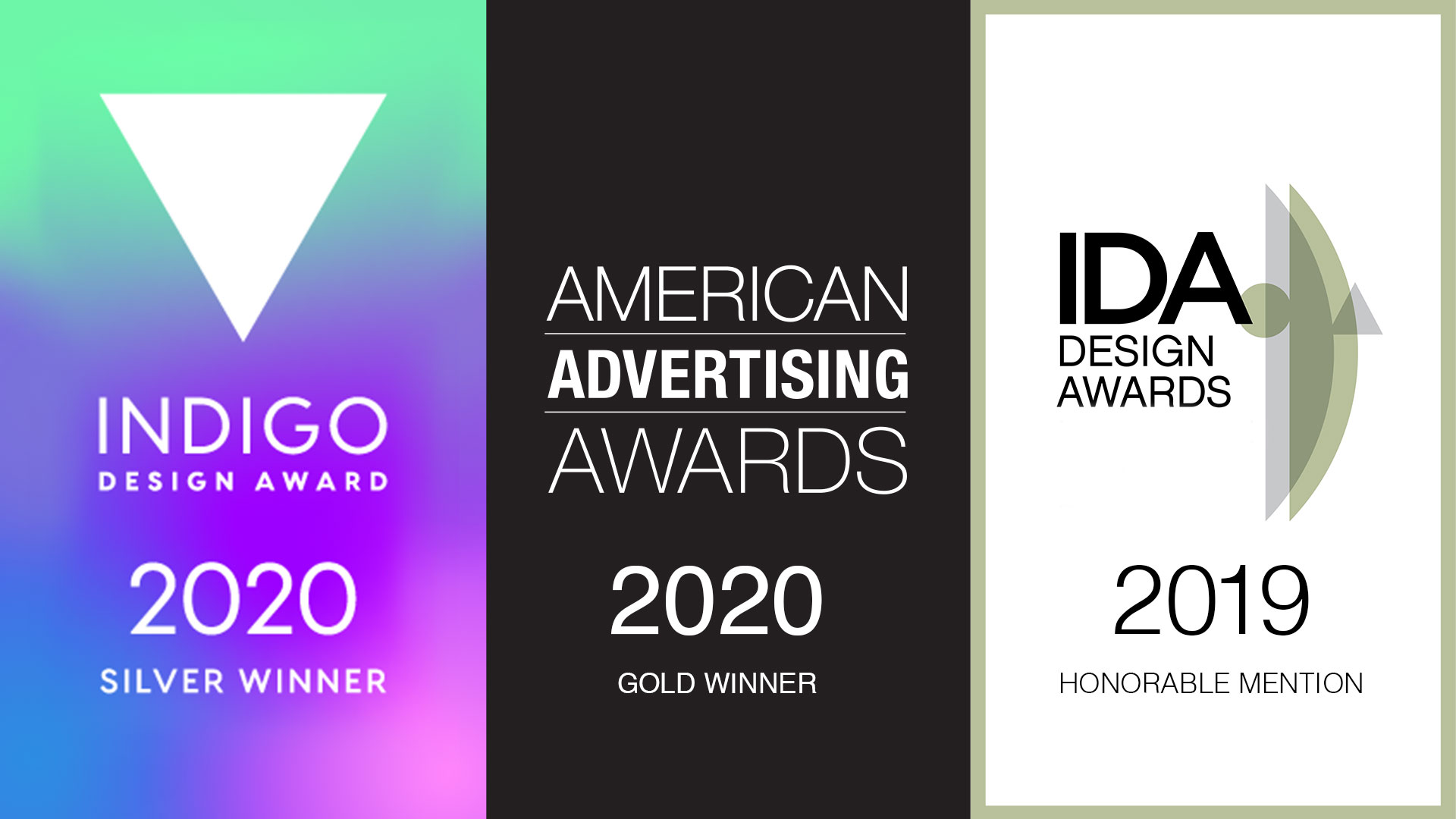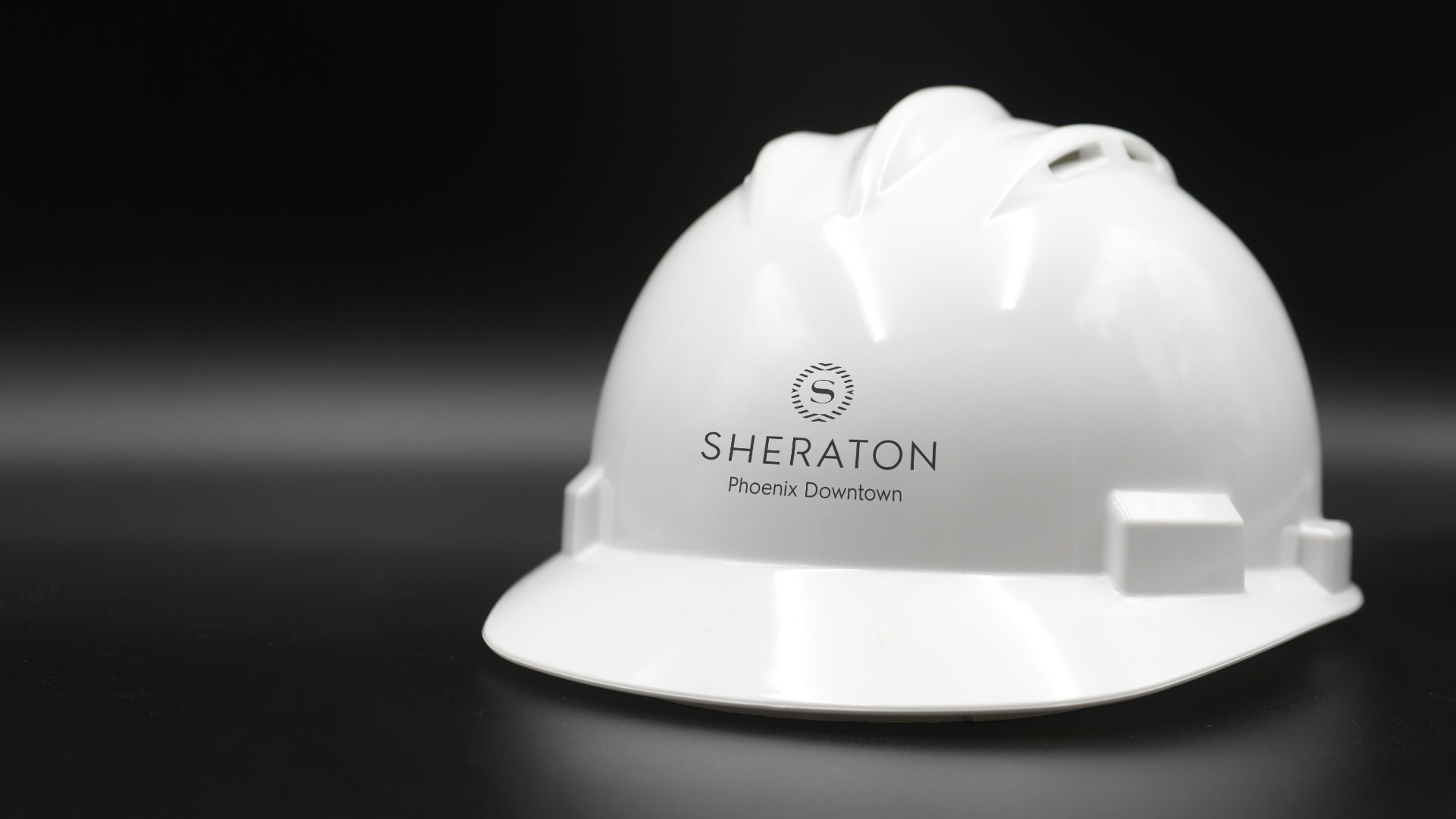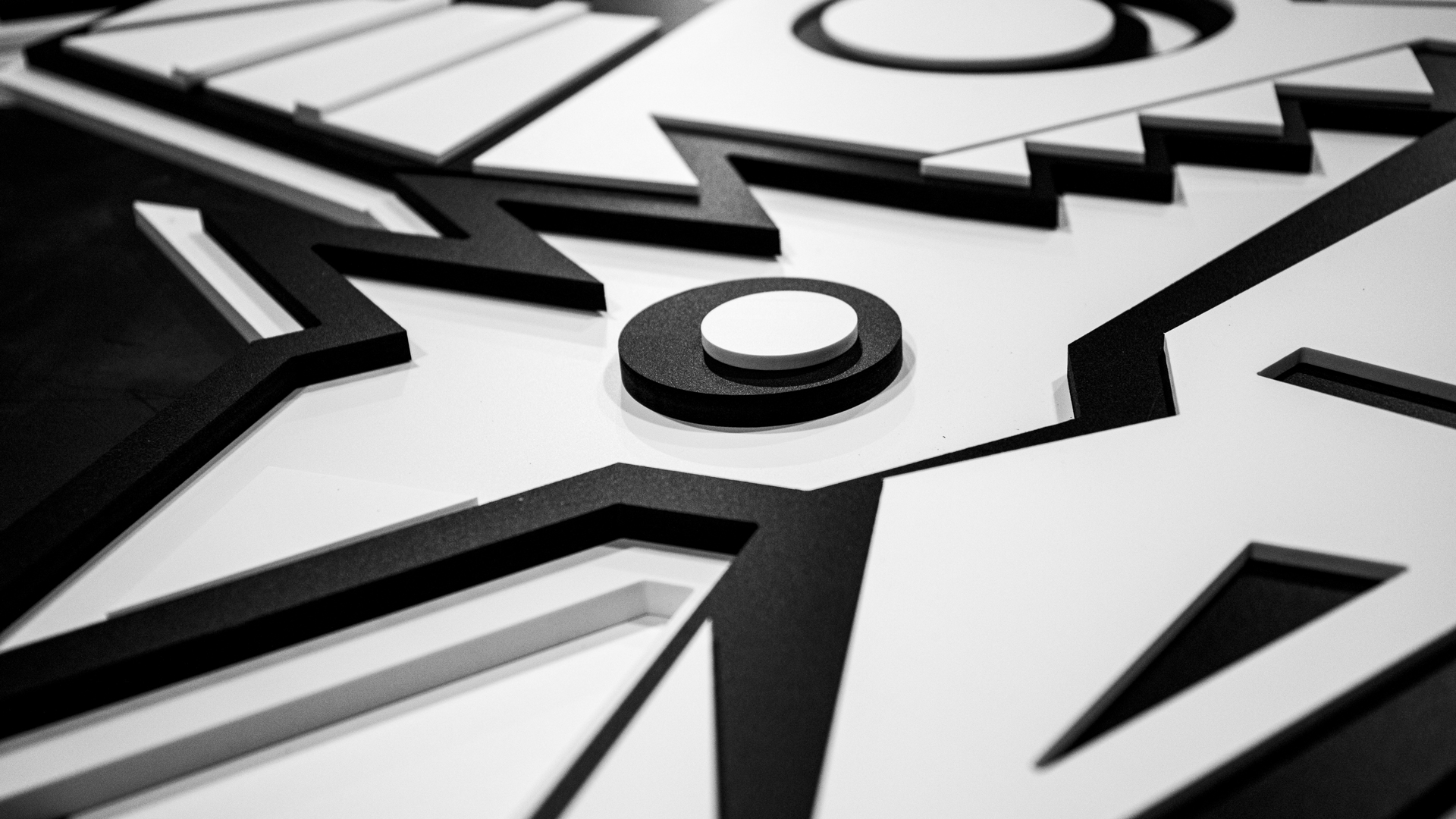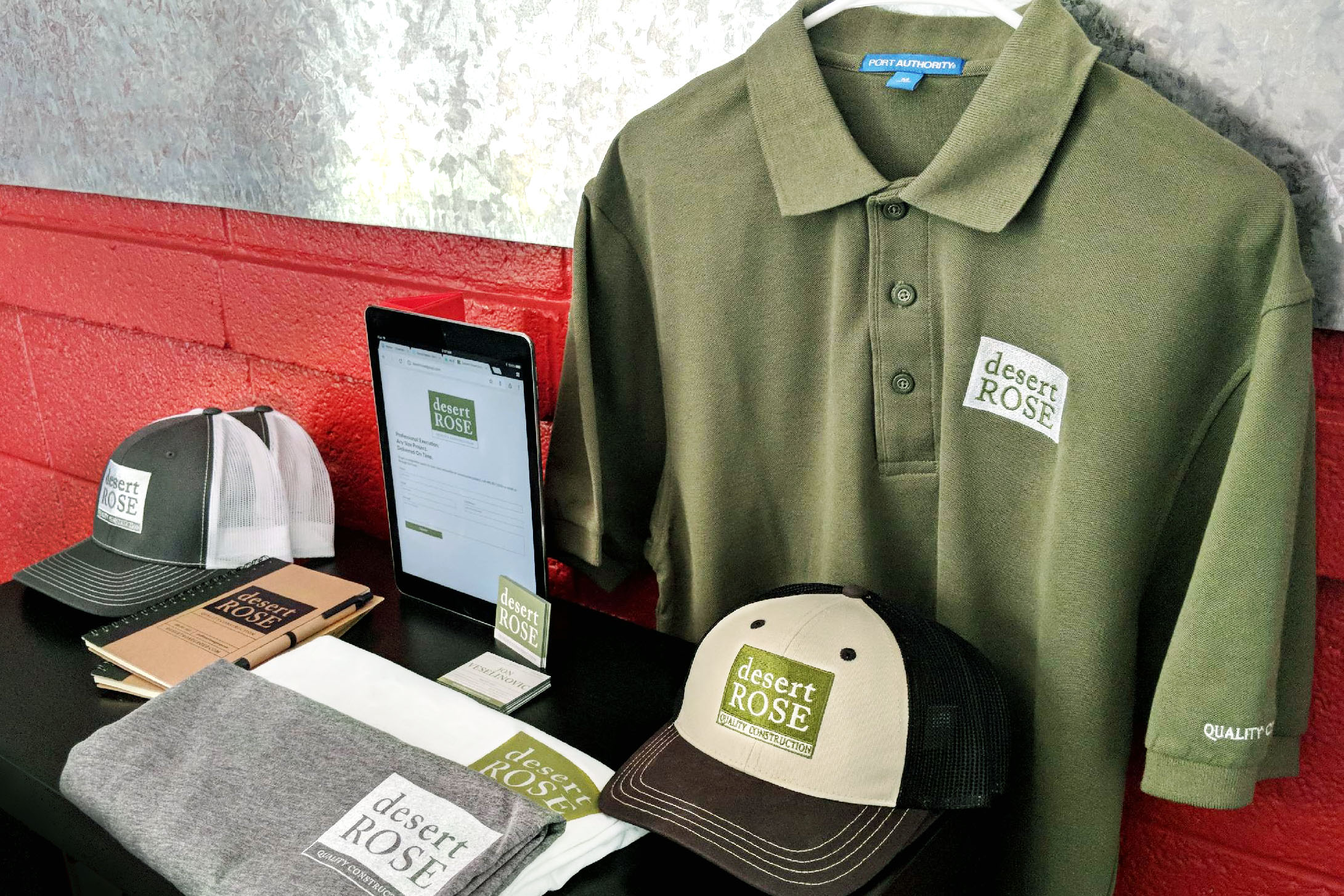Category: Design
Creative Shop Talk: The Role of Color in Design
It may not be surprising to hear that color has a huge impact on how something is perceived – whether it’s a brochure, logo, product, or walls in a building. The role of color in design is to invoke feelings in customers, align brands to their values, and communicate positive or negative messaging (like red error messages when filling out a digital form). For us, color has a huge impact on how we approach projects because the way humans perceive color varies from person to person; generation to generation; and culture to culture. The science and history of color provide powerful insight into the way it can be used in design.
What is Color?
Scientifically speaking color is not absolute. Color is the way we perceive wavelengths of light. Objects absorb wavelengths of light and the wavelengths they do not absorb are reflected off their surface, which our brains interpret as color. White is the all the visible wavelengths of light reflected back to us, while black is the complete absorption of those light wavelengths.
The number of hues a person can see varies, but on average the healthy human eye can distinguish 1 million different colors. Differentiating between those colors is a different story. Designers, artists, and those who work closely with color can typically distinguish subtleties in color that others are not attuned to. So that argument you had with your significant other about whether you painted your porch teal or green is technically a draw. Still looking for a way to settle the score? Take Pantone’s Color IQ Test, they are final say in color – but more on them later. [BBC Future]
The Limitations of Color
Throughout history access to color has been determined by technology. For thousands of years pigments could only be created from existing materials like rocks, plants, and metals. Many risked illness and even death in the pursuit of color.1 Pigments were often made from dangerous substances like lead, arsenic, and mercury. For centuries the most common way to make white paint was by chemically steaming lead to create a brittle white substance known as “white lead” which could be ground and dried. The dangerous effects of lead were well-known, but for a long time it was the only way to make white pigment, and it was cheap. Its economical appeal is one reason why it was used in interior paint for decades after other methods were discovered. [The Secret Lives of Color] [The Anatomy of Color]
In modern times, we have created synthetic pigments that have made colorful paint and clothing accessible to the masses. These synthetic pigments do have their limitations. With the introduction of digital technologies, we have created new opportunities and even bigger challenges. Through digital platforms we can create colors that are more vivid than we can produce in printed pieces. This is due to the inclusion of light in monitors and digital displays. While printing technology continues to advance, allowing us to produce brighter and clearer colors, the ability to match the most vivid colors that we can create on screen is still out of reach.

How We Speak About Color
Oftentimes, we give colors names to help us describe them. Like lavender, for a light purple. But how can we be sure that the color our minds conjure for lavender is the same color? The lavender in your mind might be bright with a hint of pink, while the lavender in someone else’s mind is cooler with a hint of grey.
The difficulties of naming colors are not new. When linguists study historic literature they see the words for black, white, and red develop rather quickly across languages, with yellow and green coming later. Blue is mysteriously missing from many significant writings. Take for instance, the Odyssey, where Homer describes the ocean as “wine-red.” The color blue’s absence indicates that there was a long period of human history where blues were considered shades of other colors – perhaps shades of black, red, or green.2 Which means the color of the ocean could be described in a myriad of ways. [My Modern Met]
Since color is so subjective, there have been numerous attempts to standardize color and create a common system shared between artists, designers, printers, and producers. Not least of these systems is Pantone. The Pantone system makes colors absolute. The company creates new colors each year, assigns them a number, creates a formula for mixing the colors, and provides printers with the mixed ink. Designers are able to provide the Pantone color to their printer who uses the Pantone ink to ensure an exact color match each time.
Pantone shows us it is possible to create a system that standardizes color across an industry at the global level. It’s a system that is ever-growing and heavily relied upon by designers in all disciplines.
The Meaning of Color Has Changed Throughout History
Colors are one of the easiest ways to visually communicate feelings. To many of us, a canvas of dark blues, greys, and black comes across as moody or depressing. Whereas pale pinks and vibrant yellows paint a lively and happy setting. But why do we think this way? A lot of it has to do with our culture.
Let’s go back to blue, in ancient Rome blue was associated with barbarism, mourning, and misfortune. Later, in 12th century France, blue was seen as divine, and even later in 17th century Japan, blue face paint was used to symbolize evil or sadness in traditional Kabuki theatre. Today in Western culture many large corporations use blue in their branding to signify trustworthiness and loyalty. Blue has had quite the history. It’s not to say that the meanings of colors are completely arbitrary, on the contrary colors are significant markers of how culture develops. [The Secret Lives of Color]

The Role of Color in Design
Adding color is the moment a project really comes to life. The selected colors solidify the personality of the project and harmonize the typeface, imagery, and copywriting. In design we use the meanings of colors to guide us, we pay attention to the specific hues to keep palettes current, and we research the market so that we know what will blend in and what will stand out.
Color may be just one part of a company’s branding, but it can significantly influence the way a brand comes across. So while the process of selecting colors is often fun for designers, its importance is never forgotten. The desired impact of a project is always at the forefront of a color palette. We also take into account a color’s ability to be accurately reproduced in a number of applications including print, digital, and in embroidery on apparel. The finer details may take time, but they are what takes a project to the next level.
The way we see colors, the way we name colors, and the meaning society gives to colors all have a clear impact on our perception. It’s a designer’s duty to understand the role of color in design and make selections that create an expressive, finessed, and harmonious experience.
FOOTNOTES
- Yes, we did say people have died for color. In The Secret Lives of Color Kassia St. Clair describes an event where a merchant outbid an emperor’s mother for a load of Indigo and nearly started political drama (oops). However, his success was short lived because he was robbed and murdered on the road home.
- Some scholars have hypothesized that early humans were mostly color-blind. Because a society without a specific color used to describe the sky is a society of lunatics.
ADDITIONAL READING
More on the history of color:
The Secret Lives of Color, Kassia St. Clair
The Anatomy of Color: The Story of Heritage Paints and Pigments, Patrick Batty
More on color organization:
Color Image Scale, Shigenobu Kobayashi
“The Visual Culture of Color: A Brief History of Color Matching Systems” Print Magazine
More on color theory:
“The Wonderful Color Wheel: Part 1” Print Magazine
“The Wonderful Color Wheel: Part 2” Print Magazine
“The Wonderful Color Wheel: Part 3” Print Magazine
Protected: Digital Sales Kit
Design Awards 2020
Awards season is here and we’re pleased to announce a few new accolades. We strive for excellence in all that we do, and recognition of our hard work is always appreciated. This year our efforts were recognized for both print and digital creations.
“THE NATURE OF ADVENTURE” CAMPAIGN
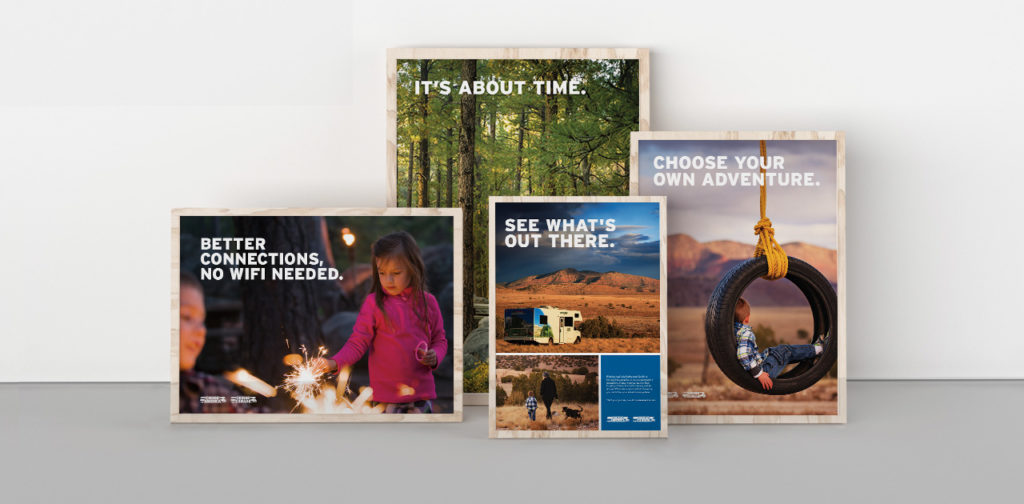
The brand campaign we created for Cruise America took home distinctions from multiple competitions. It was selected in the print advertising category at this year’s International Design Awards. In addition, the campaign also took home an award from the Indigo Awards, another distinguished international design competition. The panels of judges look to recognize the iconoclasm of design worldwide, and celebrate work that showcases a fresh new take on design-inspired composition.
The work hinges on custom photography and meaningful copywriting, and helped take the Cruise America brand to a new level. The campaign communicates not only an eagerness for new experiences, but also the peace and clarity those moments bring to our lives. See more of our work for Cruise America here.
DROP DEAD GORGEOUS

The Indigo Awards continued to be gracious with their distinctions this year by giving our project with Phoenix Fashion Week an honorable mention in the Magazine & Newspaper design category.
Inspired by the local Día de los Muertos (Day of the Dead) celebrations, we created a high fashion portrayal of a storied tradition. Día de los Muertos looks at death as a part of life, creating a beautiful celebration of the spirit. Similarly, as captured through photography, the models’ glamorous depiction of death turns the typically grim idea on its head and makes it something beautiful you can’t look away from. View the full project here.
THE KACHINA CONFERENCE ROOM

The accolades keep coming from Indigo as our design for the Arizona Coyote’s conference room was honored with an award in the Mixed Media category.
For the Coyotes, the design of the conference room celebrated the original look they wore when they were introduced to the desert back in 1996. We re-energized the room with a 6’5″ custom-built, three-dimensional Kachina; a new team member we are sure they won’t be trading any time soon, The walls were coated with skated ice, adding accents of actual hockey gear to the room that allowed this environment to come to life. View the full project here.
BONUS FEATHER FOR OUR CAPS

Last, but certainly not least, top honors and recognition for the Splinter brand itself – for this very website. Our site won multiple awards this year including a Gold Addy (the highest form of Addy) from the American Advertising Federation.
We measure our success by the success of our clients and our ability to help them achieve their goals. While our website does say a little bit about us, our primary focus was to showcase the stunning design work that we’ve made on our clients’ behalf. In a sense, this award would not be possible without your success. So to all of our clients who have given us their trust and allowed us to make these beautiful projects – thank you.
CREDIT WHERE CREDIT IS DUE
It’s not in our nature to look back and pat ourselves on the back. We stay busy and are focused on the future, looking ahead. However, from time to time, it’s essential to take note and recognize the designers and team here at Splinter. Their hard work and savvy does not go unnoticed. Not here in-studio, not from our clients and not from the international design community.
They are gifted problem solvers, talented artists, great communicators and amazing people. They deserve this moment.
Branding and Website Design for Pivotal Tax Solutions
Pivotal Tax Solutions
Success is in the details
Authoritative, clear, reassuring and diligent are the values that drive Pivotal Tax Solutions. Their unyielding and proactive approach relieves the burden of property tax, creating an opportunity for savings, investment, and expansion for their clients. Our role for this branding and website design project was to define, develop and communicate this Pivotal brand story.
Read more  Working in lockstep with their team, our starting point was to perform a brand audit. Through many discovery sessions, we dug deep to unearth and shape their core values, verbal strategy and positioning. The message sharpened as their brand story unfolded. The result revealed a unique and compelling relationship between consultant and client.
Working in lockstep with their team, our starting point was to perform a brand audit. Through many discovery sessions, we dug deep to unearth and shape their core values, verbal strategy and positioning. The message sharpened as their brand story unfolded. The result revealed a unique and compelling relationship between consultant and client.
We sharpened the brand’s position and design work through the lens of their customers. Their clients demand a financial champion. One that’s prepared and tough, intelligent and fair. Strong copy and compelling imagery, together with distinct typography and unexpected margins engage users, leading them through this experience.
SERVICES
Strategy, Concept, UX, Content Production, Web Design & Development

Putting Brand to Paper
After 20 years in business, Pivotal Tax Solutions, like many companies, had never directly defined their brand. To deliver a brand strategy and website that reflected their goals and purpose, we aligned the company’s mission with their client’s mindset in a meaningful way. This exploration led to a well-honed mission statement, brand promise and positioning statement.
Photography as a Visual Representation of Pivotal's Role in a Client's World
Pivotal advocates for property owners across the country in the fight for fair property tax laws and practices. Vibrant cityscapes capture the markets they serve. Saturated brand colors with strong overlays draw focus to the epicenter of their clientele. The result of the branding and website design is an expression of the opportunities and counsel Pivotal delivers. Clients feel confident Pivotal will provide piece-of-mind and be their guiding force through complex tax law.

High contrast and sharp geometric shapes convey Pivotal's unyielding, bold nature while simple, distinct type expresses an aptitude for clear communication.
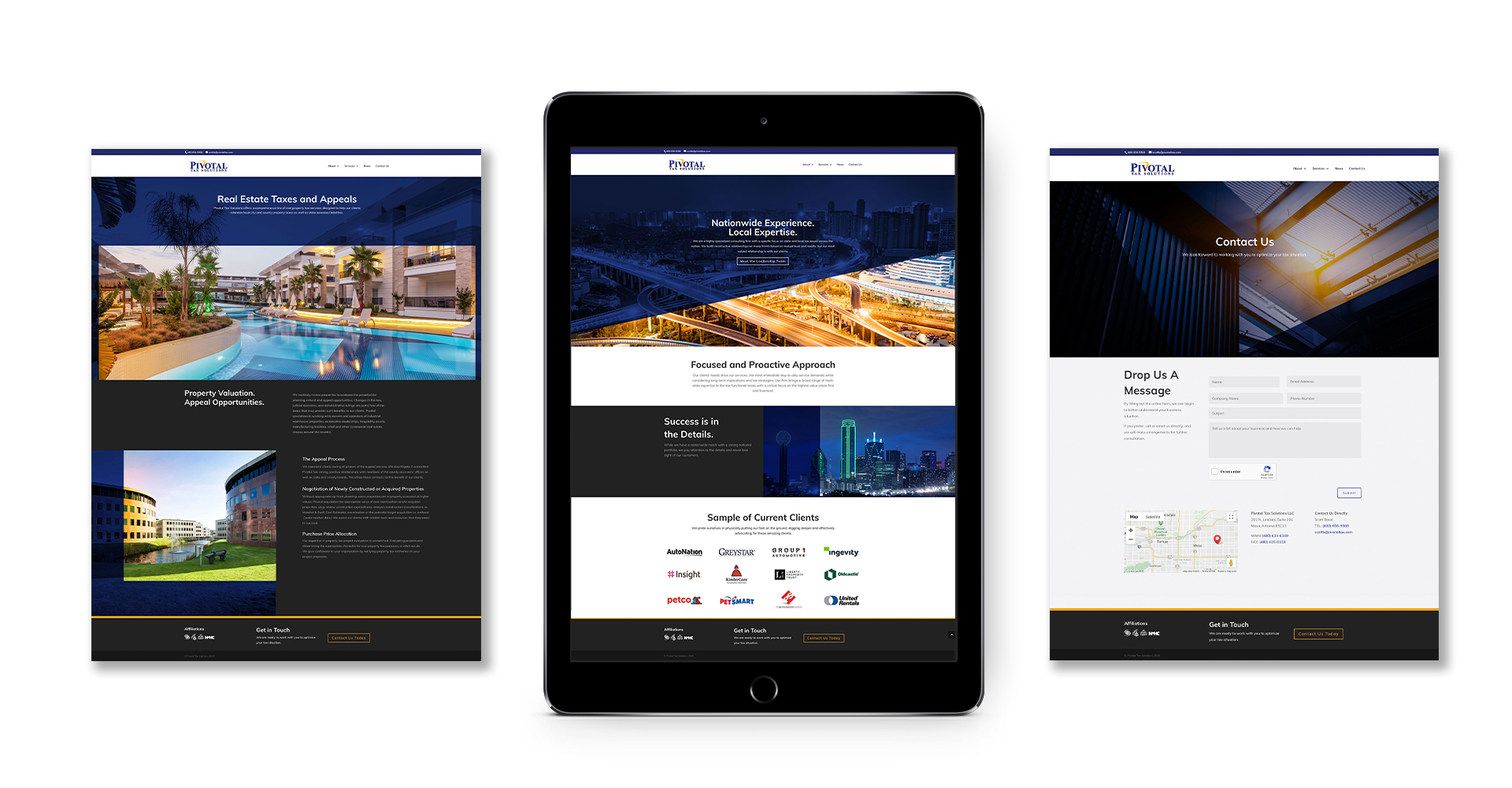

Phoenix Jewish Film Festival Design
This month, Phoenix will play host to the 24th Annual Greater Phoenix Jewish Film Festival (GPJFF). The exceptional film festival spans two weeks at three Harkins Theatres across the valley. Their aim is to present films of Jewish themes from around the world. Moved by their passion for presenting the richness of Jewish culture through the lens of film, we signed on to be their official film festival design partner.
Stemming from a collective effort, bringing together their team’s knowledge with our research and a strong collaboration of ideas, the partnership developed. Working as one receptive unit, we uncovered their vision and goals for this year’s film festival design.
We kept our focus on capturing the excitement of attending a film festival with a hint of Jewish symbolism. The concept that got the nod, dubbed the film tallit, best resonated with the stakeholders and audience for this event. In a move away from the normal glitz and glamour of typical film events, this concept set the tone. The design utilizes the traditional prayer tallit and weaves a cinematic film strip into the fabric.

To bring this concept to the big screen, we needed a great photograph of an authentic tallit. With a camera, lights and some action, we began the search for the right tallit. With careful attention to detail (and white gloves) we folded and manipulated the fabric in order to get the perfect shot. One that would showcase tradition in a new light. Once the perfect shot was captured, we began building out the rest of the visual identity. A strong display font with clarity and legibility was key. The decision to use the all-caps, san-serif Phosphate brought everything together. This textural font has a dynamic power that shines in display formats. It’s exactly the attention-grabbing type we were seeking.

From movie posters at your local Harkins and supporting ad campaigns to the ticket design and the official program, the film festival design theme carried the look of the event. If you are in the Phoenix area between February 9th – 23rd, check out one of the many incredible films. For more information about the Greater Phoenix Jewish Film Festival or for films and showtimes, visit their website: www.gpjff.org.

A big thank you to Mazel Tov Gifts is in order, as they granted us access to their store and beautiful collection of tallits for an in-store photoshoot.

Mazel Tov.
Phoenix Hotel Rebrand. The New Sheraton, Reimagined.
Every interaction a customer experiences with your company is an opportunity to turn them into an advocate for your brand. Each touchpoint shapes how a customer views you, and no one knows this better than the hospitality industry. When the Sheraton began their hotel rebrand they needed a way to convey warmth, comfort and community during a 6-month long renovation.
Sheraton Phoenix Downtown, Arizona’s largest hotel, launched its multi-phase transformation in 2019. The “studs-to-ceiling” overhaul featured a complete renovation. All 1000 guest rooms followed by a redesign of the lobby, public spaces, and dining outlets. Phoenix would be the flagship property to unveil the new look globally –introducing a full worldwide hotel rebrand.

We realized this would be the ultimate brand test since the hotel would remain open during the entire renovation. Staying flexible was essential, as new wrinkles unfolded almost daily. Crews were restructuring the framework of the hotel itself as the project unfolded. Our role was to help provide a high-quality experience for guests that maintained the consistency and familiarity of the Sheraton brand.
Construction during a hotel stay is always going to be an inconvenience. But clear wayfinding can banish the stressful aspects of navigating a constantly changing floor plan. We prioritized informative messaging with a sophisticated delivery. Sheraton’s community-forward ethos called for solutions that welcome locals and travelers alike. With that brand promise guiding our work, we created designs that eliminated doubt and instilled trust in the minds of the guests.

The class and professionalism of the Sheraton brand needed to manifest across multiple platforms. With the new brand guidelines as our compass, designs were crafted to activate crucial spaces in the hotel. Elegant finishes elevated wayfinding signage to a sophisticated level. Faux walls were raised to conceal the construction spaces and to decrease noise that would disturb guests. Branded messaging covered these walls and showcased the new amenities the reimagined Sheraton would offer.
Guests were quite literally surrounded with the Sheraton’s vision of the future, making it easy to see themselves in this new version of a cherished brand.
A Brand Finds Their Stride
In 2018, the groundbreaking event, America’s Run for the Fallen, hit the pavement in Fort Irwin, CA. It continued cross-country through 19 states over the course of four months. Names of fallen service members were read at every mile marker through the 6,000-mile journey. Gold star families and supporters gathered to hear their hero’s name read. Each fallen hero since the bombing of the USS Cole in October of 2000 was honored in this way.
The event was led by the parent organization Honor & Remember and had the support of the Department of Defense. It became one of the most comprehensive and successful tributes to our fallen military members this country has ever seen. We were moved by the remarkable message, the energy, and the amazing team of organizers. Spend any time with their founder, George Lutz, and you will be too.

We started the partnership by designing a key piece for the event – a 30ft motorhome that provided a place to gather and rest. Over 20,000 names of fallen soldiers wove across the surface of the RV like the threads of a tapestry. Throughout the country, family and friends found solace in finding the names of their loved ones.

After America’s Run for the Fallen concluded, the organization approached us to help evolve their brand design. The run across America was a one-time event, but the program races on. Honor & Remember has held individual state runs for several years. The national event gained the attention of more states looking to hold their own runs. As the cause continued to grow, the need for brand consistency became necessary.
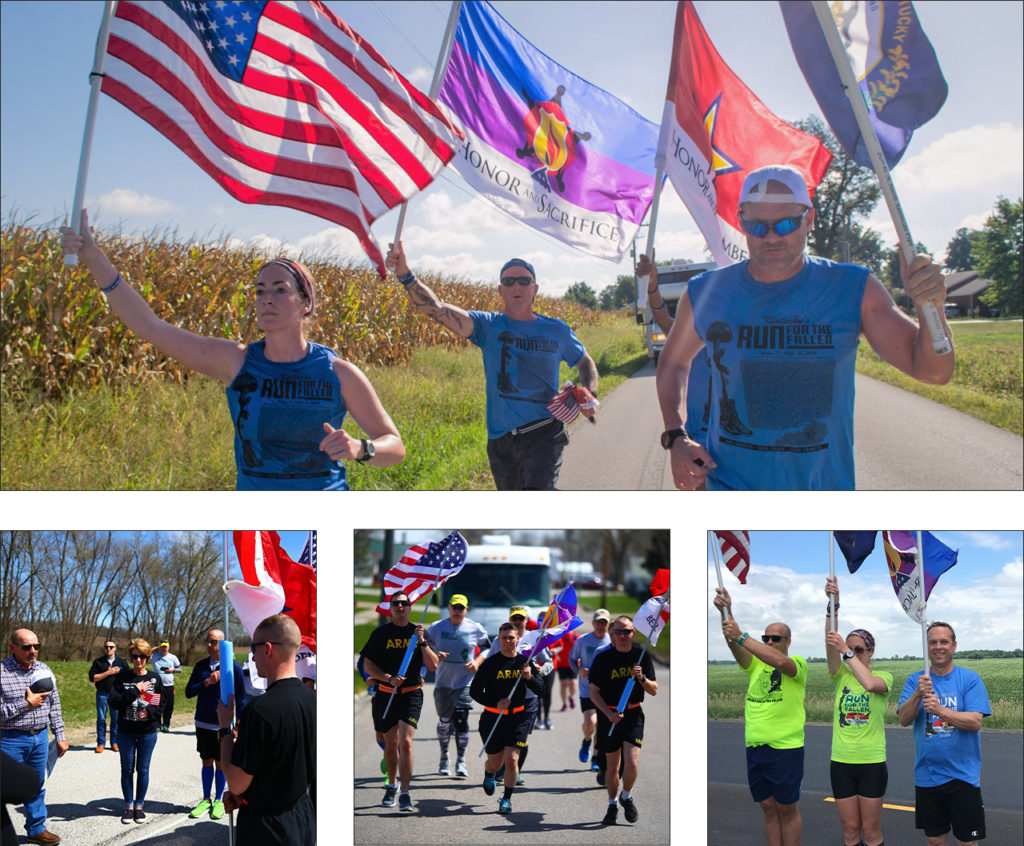
Our approach was sympathetic and methodical. The sentiment and power of this event live in photographs. As a result, the branding system needed to support the visuals without pulling focus. Most of the imagery from the runs contain American flags and other patriotic symbols. We developed a color palette with deep military green, shades of tan, and steel grey. These neutral tones complement the red, white, and blue imagery without overpowering it.
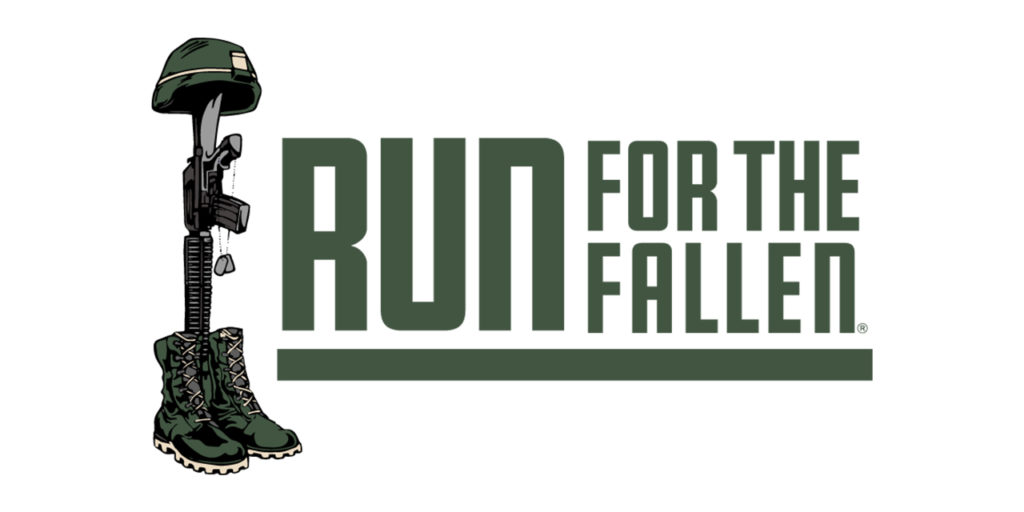
The new logo symbolizes stability, strength, and endurance. It is a tribute to both the fallen soldiers and the loved ones they left behind. We chose a square gothic style font for its clear legibility and bold geometric shape. The line at the bottom of the logo represents the road that participants run. As a foundational element, it supports the weight of the logo, just as Run for the Fallen supports the military community. To honor their existing logo, we refined the battlefield cross illustration with color and line work. The battlefield cross is a recognizable symbol of respect to honor fallen soldiers. Its distinct meaning adds context to designs and creates recognition of the event within the community.
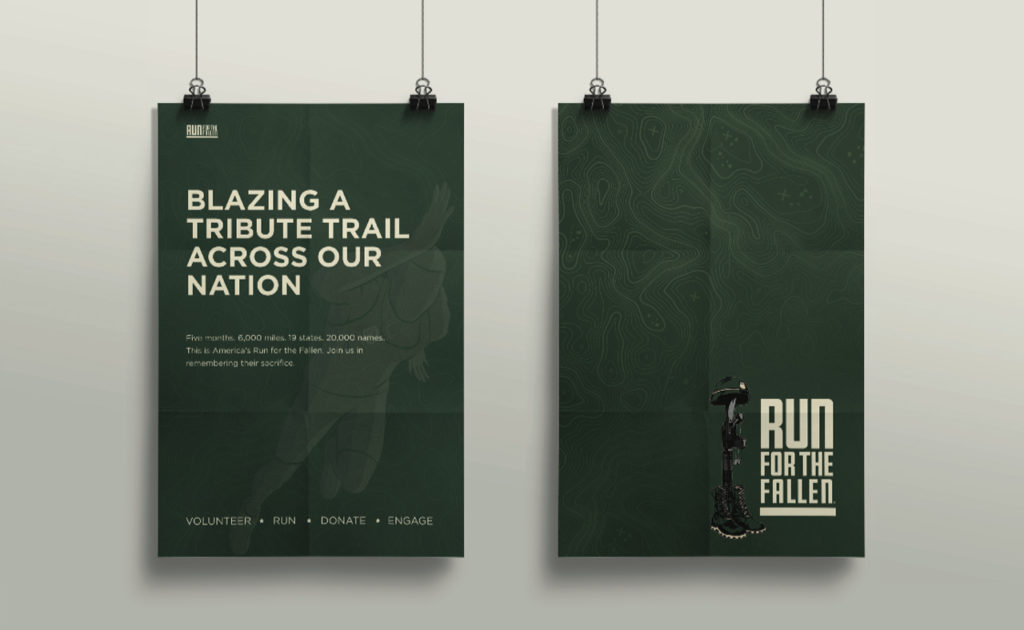
Next, we implemented the new brand design system into their marketing materials and a new website. With such a large – and growing community – it was important to create a clear structure for the website. We streamlined the user experience by consolidating information and reworking the site navigation. New participants can easily find times and locations for local runs, look up where a hero’s name will be read, or offer donations. The new website is a place where the community can come together to celebrate and honor our fallen heroes.

We can’t emphasize enough the value and integrity of their team, and are very proud to be part of this incredible undertaking. Over the last two years we have enjoyed our partnership with Run for the Fallen and cannot wait for Arizona’s run on October 18th – 20th.
Kachina, the Spirit Thrives in the Pack
The Arizona Coyotes, formerly the Winnipeg Jets, made the move from Canada in July of 1996, making the desert their home for the last 23 years and counting. Over the last two decades, they’ve moved arenas, had four Captains, were coached by Wayne Gretzky, and have been Pacific Division Champions. Their presence in Arizona both on and off the ice continues to make history, not only in the hockey community but throughout the state as well.
Hockey in the Desert. Inspired by Home.
Bringing a sports team to a new market is no easy feat, but the Coyotes approached the transition with grace and powerful intent. They involved the community from the start, allowing the fans to select their team name and hiring a local design firm to create their inaugural logo. There was no mistaking that this is an Arizona team.
The Kachina is not your traditional hockey mark. The level of detail and hidden intricacies give the viewer something new to notice with every glance. Not only is it the union of a coyote and a hockey player, but it’s uniquely Arizona.

For the 2018-2019 season, the Coyotes brought back the fan-favorite Kachina jersey as the official third jersey, which they wore every Saturday home game as a part of Kachina Saturdays. Nothing was more impressive than seeing the arena filled with these throwback sweaters.
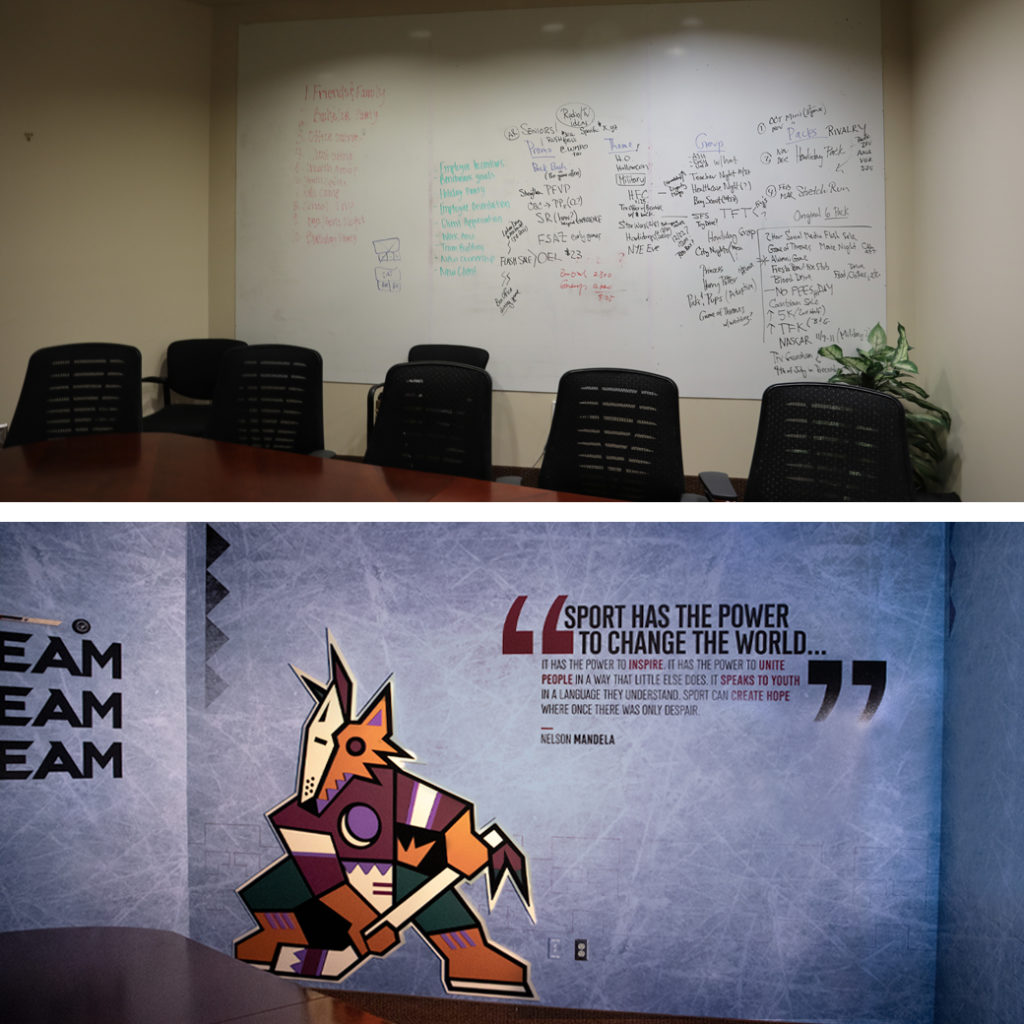
Bringing the Kachina to Life
Traditional corporate offices can tend to feel unremarkable, dusted in the traditional Arizona beige paint. Parts of the Coyotes hockey offices were no different. The word described to us was “boring” and if you know the Coyotes, they are anything but boring. Did you see the goal scored off of Conor Garland’s face? Shane Doan’s jersey retirement ceremony? Grabner’s eye injury? All those shorty’s? We could go on, but let’s get back to the Kachina.

We are obsessed with its complexity, nods to the Southwest, and clever geometric patterns. When we were tasked with re-energizing the hockey offices we knew we had to incorporate the Kachina in an extraordinary way. We didn’t want to simply bring it back, but rather bring it to life. However, before we could construct this feature piece, we had to start by completely deconstructing it.
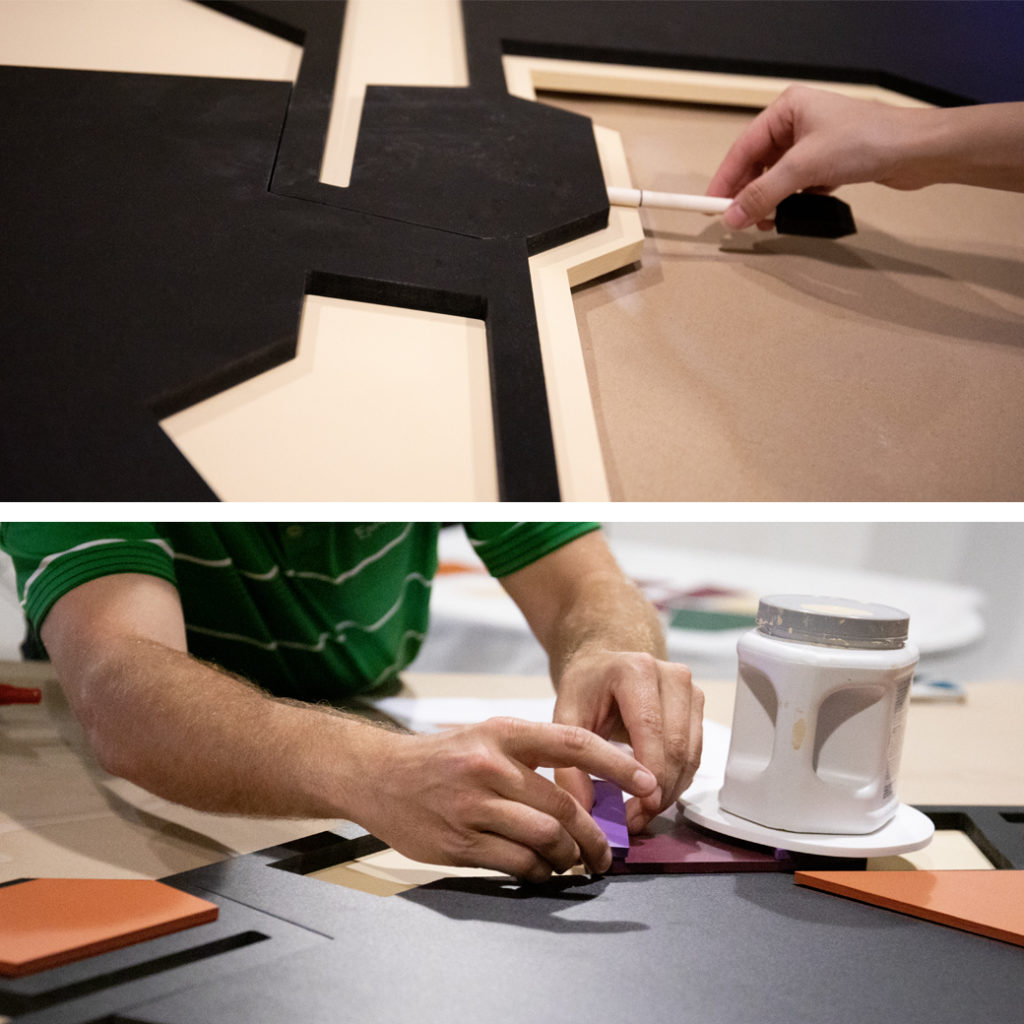
We envisioned the Coyotes staff being able to stand shoulder to shoulder with their fellow teammate. To accomplish this, individual pieces were machine cut, sanded and hand-painted using custom mixed paint to match their original ‘96 Pantone swatches. It was assembled by laying each piece on top of the next. The pieces themselves varied in depth, adding extra dimensions to each layer. Picture the biggest, most impressive jigsaw puzzle. That’s how we felt throughout the fabrication process.

After a nail biting journey from our studio to Gila River Arena, the Kachina now stands proudly in the newly minted Kachina Conference Room. Currently, we might be the only ones calling it the Kachina Conference Room. Perhaps the name sticks since the Kachina jerseys are coming back for the 2019-2020 season.
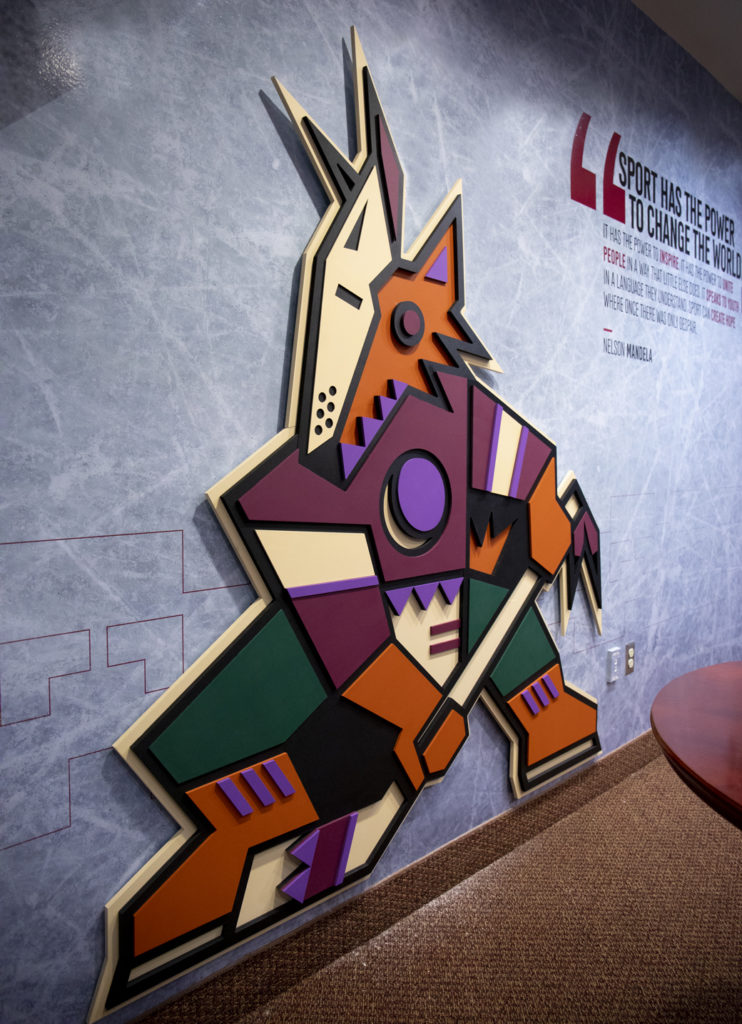
Here’s to many more seasons of desert hockey. Keep scratchin’ and clawin’.
Constructing A Brand That Builds Our Community
Constructing a community is equal parts demanding and ambitious. Meet Desert Rose, the talented visionaries building our neighborhoods. By hand. Brick by brick.
They came to us looking for a way to gain recognition in a new market. The parent company, Rose Development Corporation, is a full service construction firm based in Chicago. Desert Rose is the new Southwest branch for commercial and residential building and remodeling. Upon entering the new market, we were responsible for constructing a brand for their new environment and audience in Arizona.

Debuting the newly-minted Desert Rose Group posed a familiar design challenge common with subsidiaries. The brief made clear the need to develop a mark distinct to Desert Rose while honoring the existing identity of the parent company. This called for both visual alignment and careful differentiation between the two entities.
Trust in contractors is paramount, so we wanted to design a grounded, transparent representation of the company. Taking inspiration from our surroundings, we began by shaping a positive customer perception. We leveraged the solid foundation the two companies had already built. The mark pays tribute to the planning and forethought required to create amazing spaces.
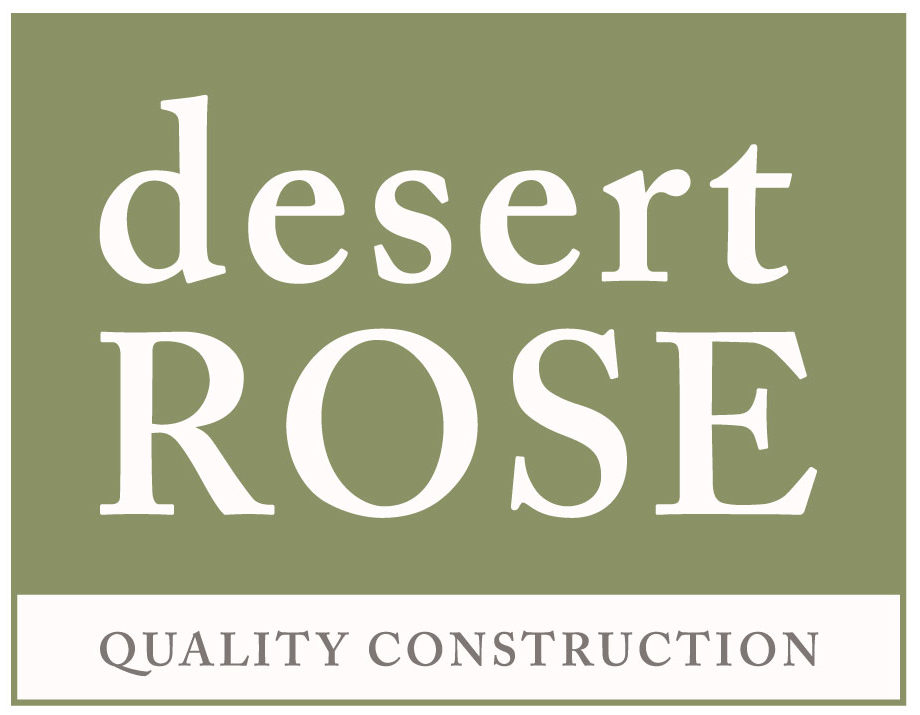
The same building blocks used in their daily work became a metaphor used as the foundation in constructing a brand for their future. It was this approach that would create a meaningful connection with their audience.

Utilizing an amiable typeface with classic roots is central to the logo design. Balancing type with a color palette that represents trust and vitality drove the finishing nail. The result is an identity that is capable and potent.
One that pays homage to the nature of building a secure and successful tomorrow.

